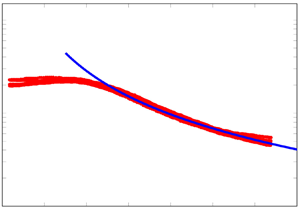Published online by Cambridge University Press: 26 September 2023

We present theoretical results related to the experimental findings of Matsubara & Alfredsson (J. Fluid Mech., vol. 430, 2001, pp. 149–168) on the scaling of the energy spectra of the Klebanoff modes, i.e. streamwise-elongated vortical disturbances generated by free-stream turbulence in a flat-plate transitional boundary layer. The scaling is explained by a model that describes the streamwise evolution of the streamwise and spanwise energy spectra. The theoretical framework is based on the quasi-steady asymptotic solution of the boundary-region equations, on an axial-symmetric model of the free-stream spectrum, and on the spectral response of the boundary layer to the external perturbations.